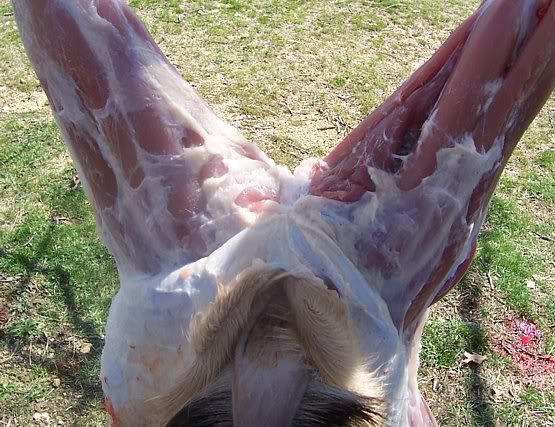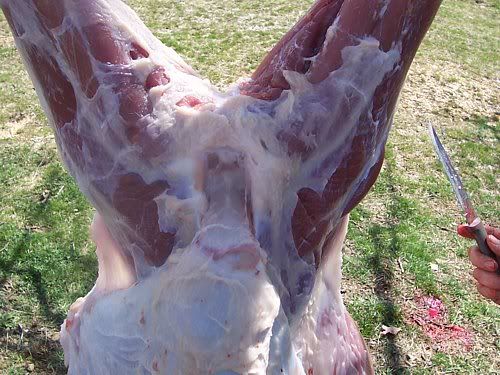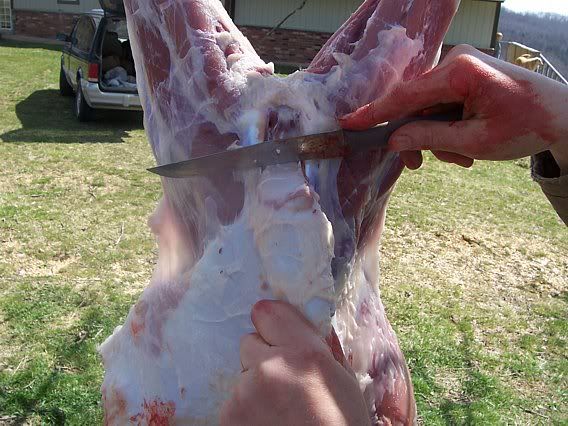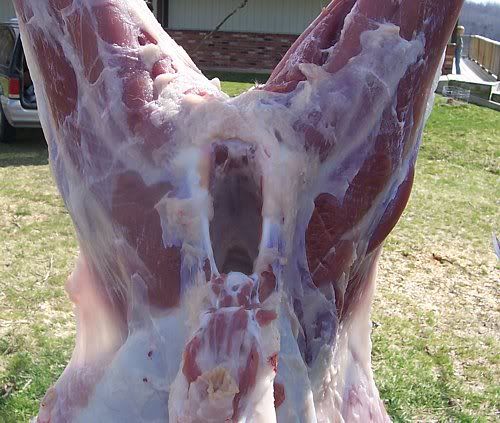Creating a Tire Garden
There are mountains of old tires out there. Americans keep on rolling and tires keep on wearing out. Every year there is almost one scrap tire created for every man, woman, and child in the United States. In 2001 alone, Americans discarded nearly 281 million tires, weighing some 5.7 million tons. All of those old treads can provide a lot of good growing space, and we’re just the folks to put them to use.
There is no appreciable risk in using recycled tires in the vegetable garden. While it is a fact that rubber tires do contain minute amounts of certain heavy metals, the compounds are tightly bonded within the actual rubber compound and do not leach into the soil. One of the ingredients in the rubber recipe is zinc. Zinc, in fact, is an essential plant element. I also expect that rubber is safer to use than treated lumber that contains copper and arsenic. Tires are durable. The very qualities that make them an environmental headache make them perfect for our uses in the garden. Once they are in place, they won’t rot and will likely be there for your grandchildren to use.
Let’s take a look at some ways to recycle old tires and literally reap the benefits. Gardening with recycled tires has many benefits besides those directly with the garden itself. It puts to use an article that might otherwise end up in a landfill or other disposal site. Those of us who are into “growing our own” are often on the lookout for ways to increase production with a minimum of effort. Gardening with tires presents several good ways to do just that, while at the same time helping to recycle the old treads from our automobiles and other wheeled conveyances. Stop by your local service station, recycle center, or tire retailer and ask them to save some tires for you. Currently, dealers charge $2 or more to dispose of used tires. Since they charge the consumer to take the old tires and have to pay to have them disposed of, they will likely be happy to let you have all you want. Most tire centers will have a stack of old tires out back that they will give you permission to root through.
A rubberized hotbed
As winter’s icy grasp finally begins to slip, the homesteader who has not kept a little something growing all winter is surely thinking about getting a few seeds stuck into the ground. After a long winter of dried, canned, frozen, or store-bought fresh vegetables, a mess of fresh veggies would taste mighty good. One of the easiest and earliest ways to get those first lettuce and spinach salads growing is to use an old method that has been common practice around these parts for generations.
Folks around here often get those first salad greens going in a planter made from an old tire. For my own planter, I utilized the old tread from a log skidder to give me plenty of size and depth. For a project of this type, I’d recommend a fairly large one, such as a rear tire off of a farm tractor or from a log skidder like I used.
|
After laying the tire at the spot where I wanted it, I used a utility knife to cut the sidewall completely out of the upper side. This was fairly easy to do, and nearly doubled the planting area available. But do it carefully, and consider using some leather gloves as protection against the knife blade.
Once I removed the sidewall, I filled the tire with some good compost on top of a six-inch layer of fresh manure and seeded my lettuce and spinach. The heat generated by the manure’s decomposition helped to heat the seedbed from below. The whole thing was covered with some old storm windows obtained for the purpose by some creative scrounging. The result was a fine durable hot bed and the only cost involved was for the seed.
Raising the roots
One of the best ways to grow vegetables, especially in cool climates, is to grow them in raised beds. Let’s look at some of the benefits of raised bed gardening and how the method is a great way to use old tires:
- When the soil is elevated, it warms faster. Raised bed gardens can increase spring soil temperatures by 8 to 13° F over the adjacent soil temperatures at ground level. The black, heat-absorbing tires compound the warming effect.
- It dries out more quickly. These rubberized raised beds are helpful in improving water drainage in heavy clay soils or in low-lying areas. The soil is more exposed, and sun and wind help to dry and warm the soil more quickly.
- It provides deeper soil for root crops to develop.
- You can plant earlier in the season and get your plants off to a healthier and earlier start. This is especially true in cooler climates where spring rains often keep vegetable garden soil wet and cold. In containers such as our tires, excess moisture tends to drain away more quickly and the soil remains warmer, thus allowing for earlier planting.
- You can harvest later into the fall.
- Because of the longer growing season, you have the possibility of growing a wider range of vegetables.
- Using these beds, you can concentrate a greater number of plants in a smaller area. This will result in less weeding and greater production.
- Finally, and not insignificantly, raised bed gardening puts plants and soil back into the reach of older gardeners or others who cannot do a lot of bending as required with an ordinary garden.
In the greenhouse
Here is one way we have used tires in our own small greenhouse. Along the front wall we placed short stacks of tires and filled them with sand. The dark color of the tires serves to absorb heat, and the sand contained in each stack helps to store it. Atop each stack was placed another tire with the upper sidewall removed as already described.The top tire was then filled with compost and soil
then seeded in lettuce, spinach, or whatever.
We’ve also found that, in the greenhouse, they make a fine planter for an extra-early or late tomato plant. Since our greenhouse is attached to my garage and shop, I utilized an existing window opening, the woodstove in the garage, a window fan, and a timer to add heat to it. Between our tire planter, keeping a fire going in the garage—which I often do anyway—and timing the fan to turn on as the day begins to cool, we have been able to pick the last tomato off of the vine on Christmas Eve.
Jump start your tomatoes
By the same token, you can get a jump on the spring growing season by creating a mini-greenhouse, of sorts, for a few tomato plants. Once you have a stack or two of tires in place, set your tomato plants in each stack. Next, place a wire hoop or tomato cage in place around the plant. Cover the cage with clear plastic and secure it with duct tape, twine, etc. If you have them available, you can place an old windowpane over the top of this tomato tower. The combination of the black rubber tires and the clear plastic “greenhouse” will cause the plant to grow quickly.
You will need to monitor the heat and health of the young plants carefully to make sure they aren’t getting too much of a good thing. Once the plant is really growing and the chance of frost is past, simply remove the plastic and allow the plant to use the wire cage to support its branches, which will soon be laden with fruit.
You can add months to your growing season using this method alone.
Tire compost bin
Used tires can also be made into a good compost bin. Begin with a half dozen or so tires as large as you can handle. Large truck tires work well. Cut the sidewalls out of both sides using the sharp utility knife. You will end up with rubber rings of tire treads. After you have several of the hoops made, place one on the spot where you want your bin to be located. Be sure to turn the soil on the spot where you place the bin. This better exposes the composting material to the bacteria, earthworms, and other compost builders. As you fill the first tire hoop, merely place another atop it and fill it. Repeat the process until you have them stacked five or six high. You can keep filling tires with garden and kitchen scraps and other compost fixin’s or just start another pile.
After the compost has worked for several weeks, remove the top hoop and place it on the ground beside the original bin. Fork the top layer of composting material into this hoop. Remove the next hoop and place it atop the one on the ground and move the plant material into it. Repeat until you have the whole compost heap turned and transferred into the restacked hoops, one at a time. Note that in the process you have completely turned the working compost pile from top to bottom, perfect for producing good compost in record time. After several more weeks, the compost should be getting that good earthy smell and will be ready to use.
Potato stacks
When I was a youngster, I used a hoe to ridge up rows and rows of potatoes, pulling the soil up around the plants to help increase their yield. I have since learned of an easier way to grow potatoes that doesn’t require any hoeing—just plant a vertical potato patch. If you are limited in space, then this method is especially beneficial. You can grow a nice crop of spuds in just a few tires. Here’s how:
Generally, a stack of four or five tires that are progressively filled with some good compost and a couple of pounds of seed potatoes will produce around 25 pounds of potatoes. A few of these stacks can provide your winter’s supply of potatoes with no problem.
|
To begin, pick a spot that is out of the way and perhaps out of sight where you can stack your tires. Loosen the soil just enough to allow for some drainage and place the first tire. Fill it with soil, being sure to fill the inside of the tire casing as well. Take your seed potatoes and cut them into pieces that have at least two “eyes,” or sprout buds in each piece. It doesn’t hurt to let each piece dry for a day or two before planting it. Plant three or four cut potato sets into the soil in the tire center. Cover the sets with enough soil to bring it level with the top of the opening.
Once the new potato plants get to be about eight inches tall, add another tire and add soil around the plants until just a couple of inches of the tops are above the soil. Repeat this process for the third and subsequent tires. As you add tires and soil to the ‘tater stack, the plant stalk is covered with soil. As you do this, the existing stalk will send off roots as well as grow upward to once again find the sunlight it needs. Since you are gradually raising the soil level eight inches or so at a time, the plant is able to keep growing without suffocating. At the same time, you are creating a 24- to 36-inch tap root off of which many lateral roots will develop. Each of the lateral roots can produce additional potatoes at three or four levels instead of only one. When you water the plant, be sure that the soil is thoroughly moistened all the way down to the base of the pile.
Since the tires also act as an insulator and heat sink for your potatoes, the added warmth will stimulate the lateral roots to multiply more quickly, giving you more potatoes. To harvest your crop, wait until the top dries up and begin to remove the tires, working your way down the stack and harvesting the potatoes as you go.
Stocking a Long-term Emergency Food Supply
One approach to long term food storage is to store bulk staples along with a variety of canned and dried foods.
Bulk Staples
Wheat, corn, beans and salt can be purchased in bulk quantities fairly inexpensively and have nearly unlimited shelf life. If necessary, you could survive for years on small daily amounts of these staples. The following amounts are suggested per adult, per year:
| Item | Amount* |
|---|---|
| Wheat | 240 pounds |
| Powdered Milk | 75 pounds |
| Corn | 240 pounds |
| Iodized Salt | 5 pounds |
| Soybeans | 120 pounds |
| Fats and Oil | 20 pounds** |
| Vitamin C*** | 180 grams |
| * Best to buy in nitrogen-packed cans ** 1 gallon equals 7 pounds *** Rotate every two years | |
Stocking Foods for Infants
Special attention would need to be paid to stocking supplies of foods for infants. Powdered formula would be the least expensive form of infant formula to stock. Commercially canned liquid formula concentrate and ready-to-feed formula may also be stored. Amounts needed would vary, depending on the age of the infant. Infant formula has expiration dates on the packages and should not be used past the expiration date. Parents should also plan to have a variety of infant cereals and baby foods on hand. Amounts needed will vary depending on the age of the infant.
Other Foods to Supplement Your Bulk Staples
You can supplement bulk staples which offer a limited menu with commercially packed air-dried or freeze-dried foods, packaged mixes and other supermarket goods. Canned meats are a good selection. Rice and varieties of beans are nutritious and long-lasting. Ready-to-eat cereals, pasta mixes, rice mixes, dried fruits, etc. can also be included to add variety to your menus. Packaged convenience mixes that only need water and require short cooking times are good options because they are easy to prepare. The more of these products you include, the more expensive your stockpile will be.
The following is an easy approach to long-term food storage:
- Buy a supply of the bulk staples listed previously.
- Build up your everyday stock of canned goods until you have a two-week to one-month surplus. Rotate it periodically to maintain a supply of common foods that will not require special preparation, water or cooking.
- From a sporting or camping equipment store, buy commercially packaged, freeze-dried or air-dried foods. Although costly, this is an excellent form of stored meat, so buy accordingly. (Canned meats are also options.) Another option is to purchase dry, packaged mixes from the supermarket.
| Flour, White Enriched | 17 lbs |
| Corn Meal | 42 lbs |
| Pasta (Spaghetti/Macaroni) | 42 lbs |
| Beans (dry) | 25 lbs |
| Beans, Lima (dry) | 1 lb |
| Peas, Split (dry) | 1 lb |
| Lentils (dry) | 1 lb |
| Dry Soup Mix | 5 lbs |
| Peanut Butter | 4 lbs |
| Dry Yeast | 1/2 lb |
| Sugar, White Granulated | 40 lbs |
| Soda | 1 lb |
| Baking Powder | 1 lb |
| Vinegar | 1/2 gal |
Storage and Preparation of Food Supplies
All dry ingredients or supplies should be stored off the floor in clean, dry, dark places away from any source of moisture. Foods will maintain quality longer if extreme changes in temperature and exposure to light are avoided.
Grains
If you purchase bulk wheat, dark hard winter or dark hard spring wheat are good selections. Wheat should be #2 grade or better with a protein content from 12 - 15% and moisture content less than 10%. If wheat is not already in nitrogen-packed cans, it can be stored in sturdy 5 gallon food-grade plastic buckets or containers with tight fitting lids. If the wheat has not already been treated to prevent insects from hatching, wheat may be treated at the time of storage by placing one-fourth pound of dry ice per 5 gallon container in the bottom and then filling with wheat. Cover the wheat with the lid, but not tightly, for five or six hours before tightening the lid to be air tight. Other grains to consider storing include rye, rice, oats, triticale, barley and millet. Pasta products also satisfy the grain component of the diet. Milled rice will maintain its quality longer in storage than will brown rice. Many of the grains may require grinding before use. Some health food stores sell hand-cranked grain mills or can tell you where you can get one. Make sure you buy one that can grind corn. If you are caught without a mill, you can grind your grain by filling a large can with whole grain one inch deep, holding the can on the ground between your feet and pounding the grain with a hard metal object such as a pipe.
Non-fat Dry Milk/Dairy Products
Store dry milk in a tightly covered air-tight container. Dry milk may be stored at 70oF for 12 - 24 months. If purchased in nitrogen packed cans, storage time for best quality will be 24 months. Other dairy products for long term storage may include canned evaporated milk, pasteurized cheese spreads and powdered cheese.
Other Foods or Ingredients
Iodized salt should be selected and stored in its original package. Dried beans, peas, lentils, etc. provide an inexpensive alternative to meat and are easy to store in glass or plastic containers tightly covered. Those purchased from the grocery shelf are normally the highest quality.
Open food boxes or cans carefully so that you can close them tightly after each use. Wrap cookies and crackers in plastic bags, and keep them in air-tight storage containers. Empty opened packages of sugar, dried fruits and nuts into screw-top jars or airtight food storage containers to protect them from pests. Inspect all food containers for signs of spoilage before use. Commercially canned foods are safe to eat after long periods of storage unless they are bulging, leaking or badly rusted. Quality, however, will diminish with long term storage. Changes in flavor, color and texture may be observed and nutritional value will decrease. For best quality, use within one year. If stored longer than one year, rotate canned goods at least every two to four years.
Vitamin and Mineral Supplements
To help compensate for possible deficiencies in the diet in emergency situations, families may wish to store 365 multi-vitamin/mineral tablets per person. Careful attention should be paid to expiration dates on packages.
Shelf Life of Foods for Storage (Unopened)
Here are some general guidelines for rotating common emergency foods to ensure the best quality of the products.
- Use within six months:
- Powdered milk (boxed)
- Dried fruit (in metal container)
- Dry, crisp crackers (in metal container)
- Potatoes
- Use within one year:
- Canned condensed meat and vegetable soups
- Canned fruits, fruit juices and vegetables
- Ready-to-eat cereals and uncooked instant cereals (in metal containers)
- Peanut butter
- Jelly
- Hard candy, chocolate bars and canned nuts
- May be stored indefinitely* (in proper containers and conditions):
- Wheat
- Vegetable oils
- Corn
- Baking powder
- Soybeans
- Instant coffee, tea
- Cocoa
- Salt
- Noncarbonated soft drinks
- White rice
- Bouillon products
- Dry pasta
- Vitamin C
- Powdered milk (in nitrogen-packed cans)
If the Electricity Goes Off...
FIRST, use perishable food and foods from the refrigerator. THEN use the foods from the freezer. To minimize the number of times you open the freezer door, post a list of freezer contents on it. In a well-filled, well-insulated freezer, foods will usually still have ice crystals in their centers. Consume the foods only if they have ice crystals remaining or if the temperature of the freezer has remained at 40 degrees F or below. Covering the freezer with blankets will help to hold in cold. Be sure to pin blankets back so that the air vent is not covered. FINALLY, begin to use non-perishable foods and staples.
References:
- Federal Emergency Management Agency. June 16, 1998 Update. Emergency Food and Water Supplies (FEMA-215). Washington, DC.
- Church of Jesus Christ of Latter-Day Saints. 1998. Emergency Preparedness Manual.
| Slaughtering and Butchering By Dynah Geissal |
|
































No comments:
Post a Comment